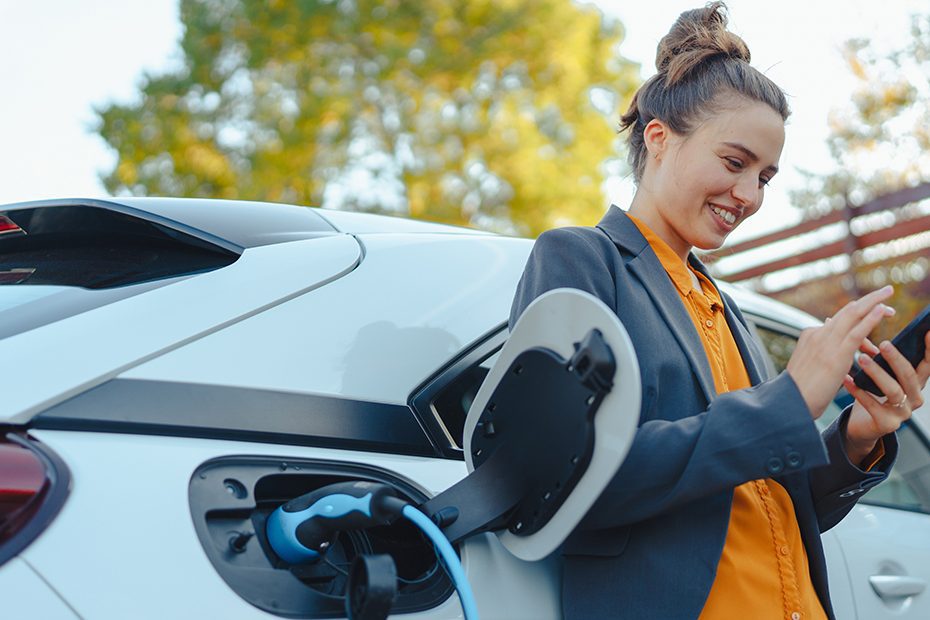Electric Vehicles require less maintenance than conventional vehicles, in part because there are fewer fluids and fewer moving parts. If you own a standard ICE (internal combustion engine) car, you know the routine: oil changes, filter replacements, belt replacements, hoses repairs, fluid flushes, transmission service—not to mention whole system checks every 30k, 60k, or 90k miles. Plug-in hybrid electric vehicles (PHEVs) and hybrid electric vehicles (HEVs) will require a similar maintenance schedule as standard vehicles, but with a fully electric (BEV) car, there are some key things to know.
Does my EV Need Service?
In short, yes. Electric vehicles are generally cheaper to drive and maintain than conventional cars, but there are a few periodic checks that should be done to keep your EV running smoothly and—most importantly—to keep the vehicle’s warranty in effect.
What Kind of Service or Maintenance Do I Need for My EV?
Every 7,500 miles (approximately every six months to one year), it’s a good idea to schedule a full inspection.
Here’s a checklist of what is typically required:
- Rotate your tires. Regular tire rotation is important for all cars, but it is a maintenance habit that many EV drivers overlook (since they aren’t going in for regular oil changes and repairs). To prevent tires from wearing out prematurely, have them rotated regularly.
- Check the battery coolant levels. Left unattended, coolant levels can drop—which will hinder vehicle performance and leave the battery pack susceptible to overheating. Service technicians can inspect your levels and top off your coolant if needed.
- Check the power and accessories. Electric vehicle maintenance technicians will check your cabin heater, power inverter, accessory power, and charger modules. This is especially important to consider when seasons are changing because heating or cooling the cabin of your vehicle can be a power drain on the system—especially during extreme heat or cold.
- Check the brakes and steering. The technicians should inspect your brakes, steering, suspension, and chassis components for any unusual wear or damage. They should also check your power steering and drive shafts for wear.
- Final checks. At the 7.5k mile mark, it’s a good idea to have your service technicians lubricate the door locks and inspect the gas struts for suspension wear. At that time, they can also check your vehicle’s various light bulbs (headlamps, taillights, cabin lights, etc.) for burnouts and replace them if necessary.
The Bottom Line
An EV doesn’t require much upkeep, so ownership means not only saving at the pump but also saving in repair costs down the line. The care an EV does require is focused on maintaining the battery, tires, suspension, and brakes. The battery is the largest and most expensive component of an eclectic vehicle, so it is important to take good care of it. EV batteries last about 8 years (or around 100k miles) and cost about $5,000 to replace. Comparatively speaking, a standard car costs about $1,400 to maintain per 25k miles (and the costs rapidly increase over 100k miles).
The suspension system on an EV will wear much like a standard vehicle. As you drive over train tracks, hit potholes, or encounter other obstructions on the road, your suspension system will wear down. How quickly that happens or how often repairs will be needed depends mostly on your local road conditions and driving style.
When it comes to brakes, EVs use regenerative braking systems, which means they capture kinetic energy from under the vehicle’s battery and convert it into electrical power. These systems last longer than conventional braking systems because they are gentler on the brake pads. In fact, it is not uncommon for EV drivers to go 100k to 200k miles before having their brakes serviced or replaced. That said, EV brakes are more likely to wear out from a lack of use than from overuse, and regular maintenance will keep them lubricated and in working order.
Here are some more electric vehicle maintenance steps you can take to keep your EV happy:
Every 30 Days
Check the tire pressure and examine the tires for excess wear. Check the windshield wiper fluid and top it off if necessary.
Every 7.5k Miles
Schedule a full inspection.
At 15k
Replace wiper blades.
At 36k
Replace cabin filter.
At 75k
Schedule an electric vehicle maintenance appointment to drain and service the coolant circuits and to replace suspension gas struts, if necessary.
